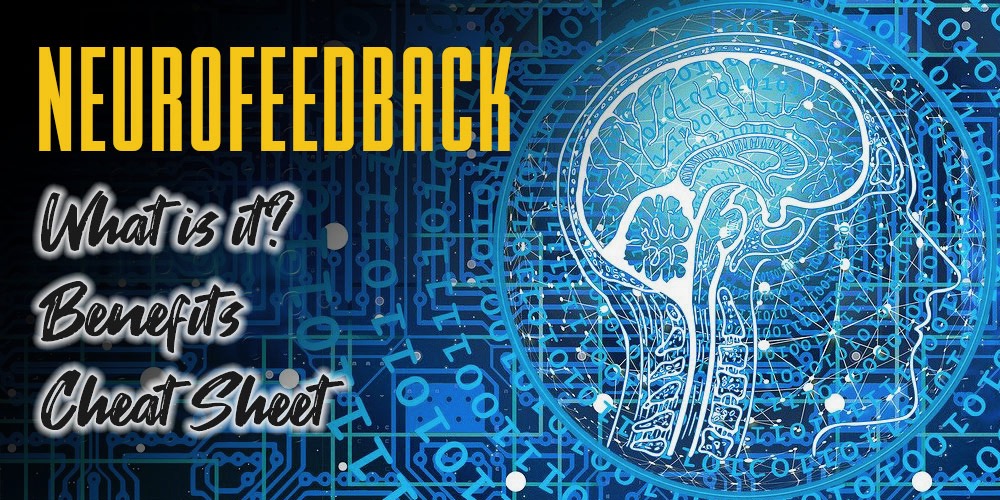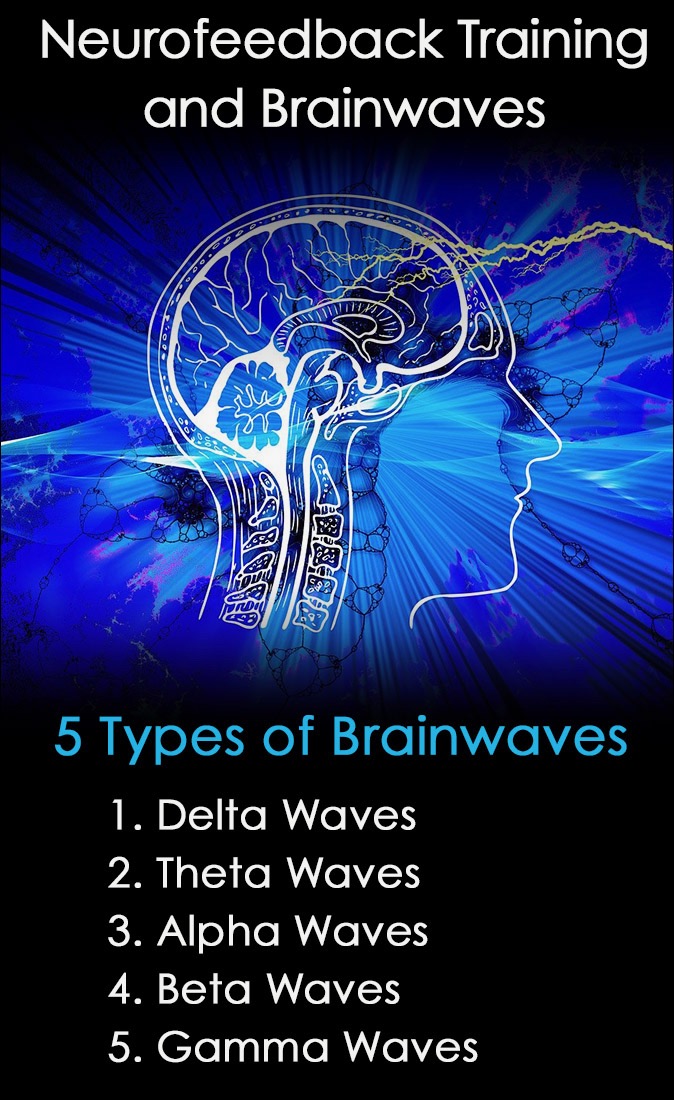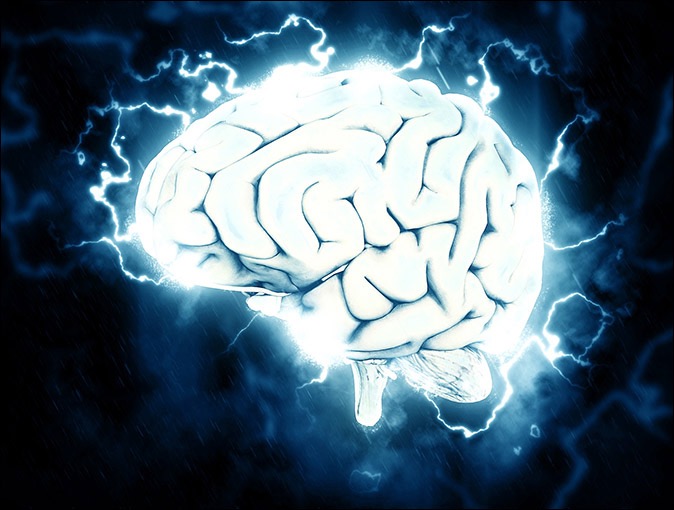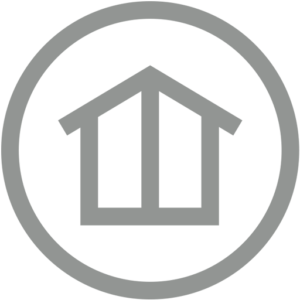
This Neurofeedback Cheat Sheet is a quick guide that explains how Neurofeedback Therapy and neurotherapy brainwave imaging works, and the benefits of using it for mental health and addiction recovery.
When it comes to the treatment of illness, chronic disease, and even injuries, one of the most effective ways for health care professionals to diagnose conditions is to look at images of the specific organ or areas of the body that might be suffering or functioning improperly.
With the right imaging data, creating a plan for treatment can be far more effective for healing and recovery than guessing without any data. This is even true of the brain.
Neurofeedback Therapy is a noninvasive method of measuring brainwave activity, along with utilizing images of the brain, to identify potential imbalances that can drive conditions like depression, anxiety, chronic pain, post-traumatic stress disorder (PTSD), and addiction.
This innovative therapy, sometimes referred to as EEG Biofeedback or Neurotherapy, actually trains the brain to function better by helping to normalize and manage neural activity that is out of balance.
Neurofeedback Cheat Sheet
Data from a 2017 study from the International Society for Neurochemistry found that the human brain is incredibly adaptive and malleable, meaning it has the ability “…to adapt continually to changes in the environment,” as researchers noted in the Journal of Neurochemistry.
The human brain is neuroplastic and changeable, which means it will respond to conditioning, essentially learning how to self-regulate through a series of neurofeedback sessions. It is very similar to the idea of physical conditioning, where a person’s body grows healthier and stronger with repeated exercise.
The brain is the center of every human emotion, from sadness and happiness to anxiety and fear, in addition to intense cravings or feelings of overwhelming love. Behind every single human emotion and action is brainwave activity.

There are a number of different brainwave types that include the following (from slowest to fastest):
1. Delta Waves
Delta waves are seen in the deepest, most restful stages of when a person is sleeping.
2. Theta Waves
Theta waves are present when the brain is seemingly distant from the present reality, like in the midst of a daydream.
3. Alpha Waves
Alpha waves are measurable when a person is in a very relaxed or meditative state of mind.
4. Beta Waves
Beta waves are experienced when the mind is actively engaged, which are present during a problem-solving situation, such as trying to complete a puzzle quickly.
5. Gamma Waves
Gamma waves are the fastest brain waves and are involved in a high level of mental consciousness or problem solving.
Of course there are subsets of these, such as the Sensorimotor Rhythm (SMR) and several others, but for the most part, these are the five common groupings of brainwaves.
Brain activity is the interaction of all these different brainwave types throughout a typical day, and is connected to mental health and wellbeing.
Measuring brain activity with neurofeedback therapy allows health care workers to identify any areas of the brain that may be overactive.
For instance, too much activity in the amygdala, which is located deep in the center of the brain and associated with emotions, can be an indication of anxiety issues, like panic disorder or social anxiety disorder.
Understanding brainwave activity is vital for addressing mental health issues, such as depression, addiction, toxic stress, and even physical conditions like traumatic brain injuries (TBI) and chronic pain.

What is Neurofeedback Therapy?
A neurofeedback therapy session, is when a certified technician uses sensors, which are arranged comfortably on the head to measure brain activity created through a variety of different activities, like watching a video clip, working on a puzzle, or even simply listening to music.
While engaged in a particular activity, the sensors feed brainwave activity into a computer that is measuring the person’s neural output.
If an imbalance is identified, neurofeedback therapy essentially helps to train the brain to regulate itself by using conditioning, such as rewarding positive brain feedback with points in a game or taking points away in the case of negative brainwave activity.
It sounds like an over simplification, but the truth is that the human brain can actually learn from its own mistakes through repeated neurofeedback sessions.
Some of the Benefits of Neurofeedback Therapy Can Include:
- Increased ability to stabilize and improve mood
- Greater sense of calm and peace of mind
- Improved concentration and focus
- Feelings of being better emotionally connected to others
- Greater ability to be objective in stressful matters
Neurofeedback therapy is especially useful for people struggling with substance abuse and the disease of addiction, which is known to disrupt the overall functional balance and even structure of the brain.
Not only does neurofeedback therapy help return brainwave activity to normal over time, it can also help identify any undiagnosed mental health conditions, such as depression or PTSD, that can worsen the symptoms of addiction.
The presence of a mental health disorder and a substance use disorder is referred to as a co-occurring disorder requiring dual diagnosis treatment.
Research has shown that neurofeedback training can improve outcomes for patients receiving addiction treatment.
According to a study at the University of California Los Angeles, nearly 80 percent of the patients in rehab that received neurofeedback training maintained their recovery for longer than those patients that did not receive this treatment.
Hopefully this short Neurofeedback cheat sheet offers a better understanding of how Neurofeedback Therapy works, and ways that it can be used to overcome mental health and addiction issues.
Related Posts
- Is Addiction a Disease or a Choice?
Is addiction a disease? Is alcoholism genetic? Or is it simply a personal choice? These…
- Cocaine Withdrawal Symptoms, Treatment and Detox
Giving up a stimulant substance like cocaine has a complex psychological effect on the recovering…
- Dry Drunk Syndrome and What is a Dry Drunk?
The term Dry Drunk Syndrome, or simply Dry Drunk, refers to a person who quit…
